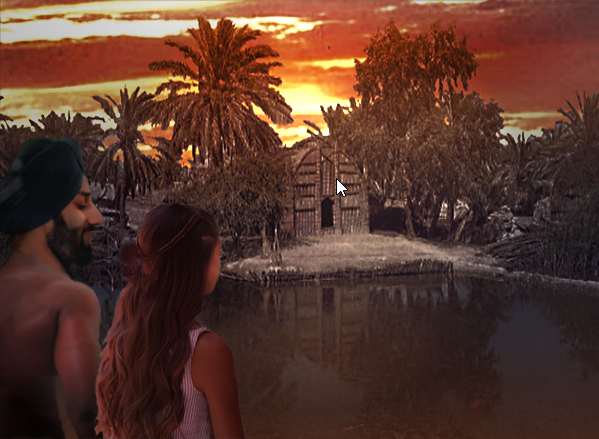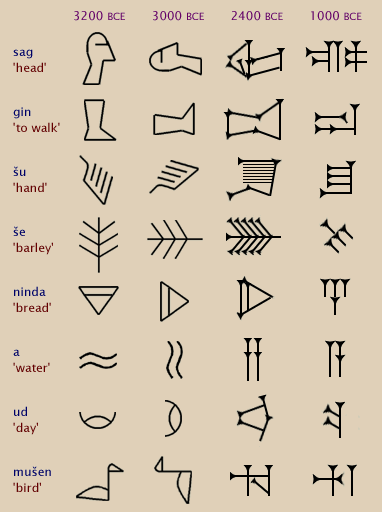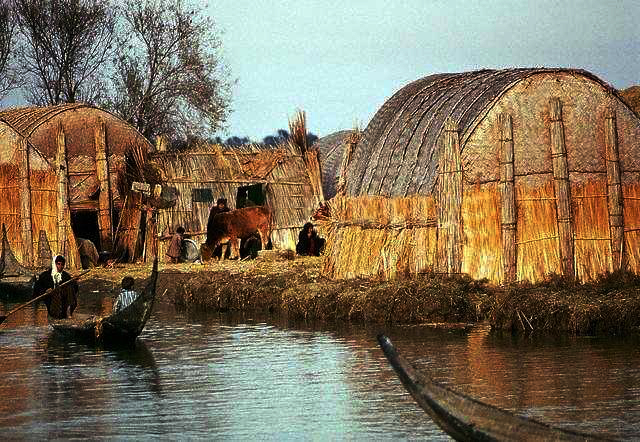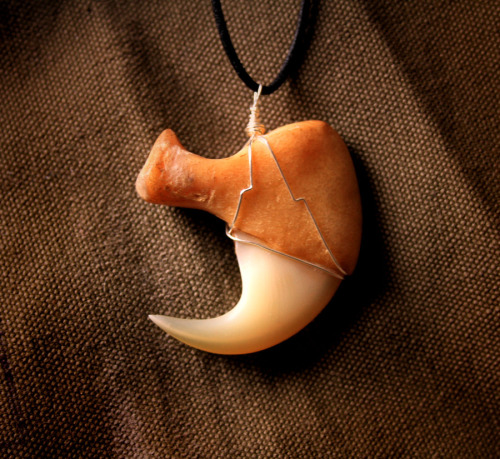Selected Images
Most of the images here reflect some aspect of the Sumerian Chronicles trilogy.
NIPPUR HARBOR
Here is how the wharf area might have appeared early one morning, looking north toward the city, with Ekur temple looming above the city walls (from an illustration by Balage Balough).
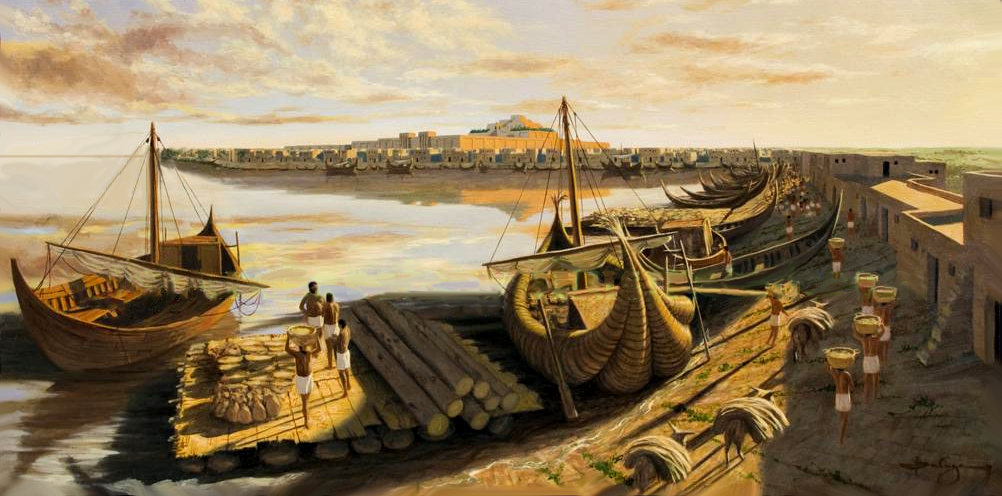
BURUM TOWN ON DELTA
The crowd awaits Uruna’s approach to Burum bar on the day she meets the king cobra. The large reed craft in the foreground would be her royal barge with its draped travel box amidships. She would have arrived from the marshes in one of the beached swifthulls with the upswept prows (Eden’s Bride, Chapter 7).
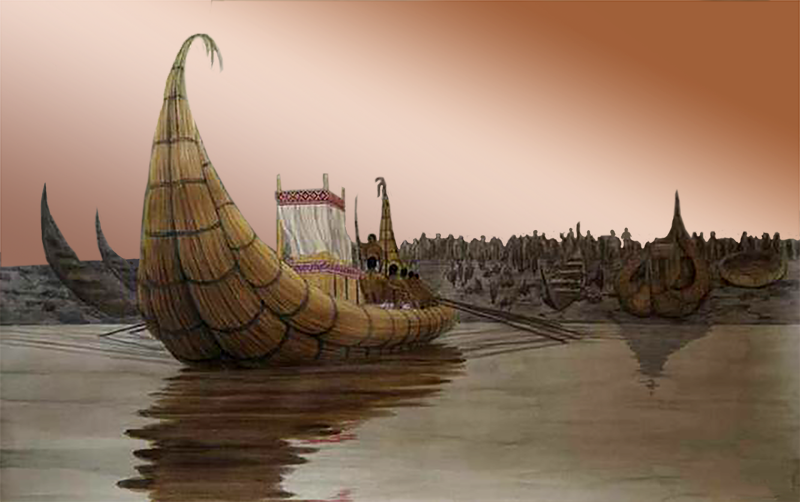
SENARIB CONVOCATION
How Enguda’s evening convocation of gubna priests at the open Senarib might have appeared (Eden’s Bride, Chapter 12).
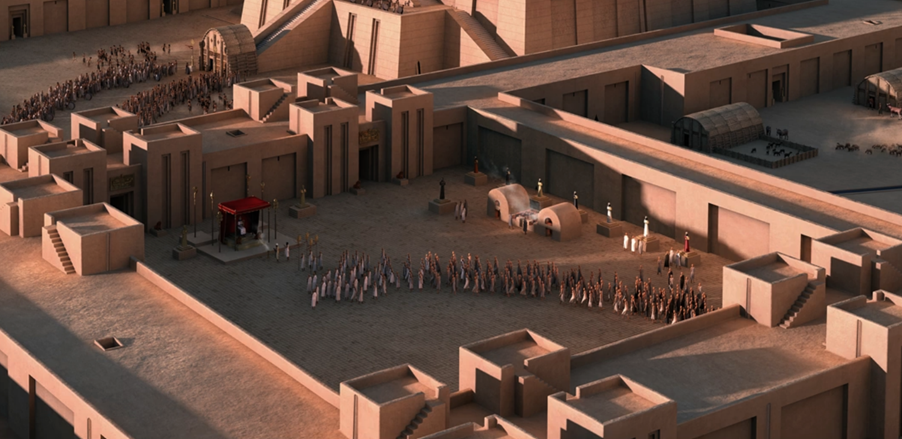
DAILY LIFE
It’s hard to find depictions of Sumerian daily lives that aren’t renderings from Assyrian culture that took place as much as 2,000 years after my books. Here I’ve chosen just a couple that I believe reflect more closely the 3,200 BC Sumerians.
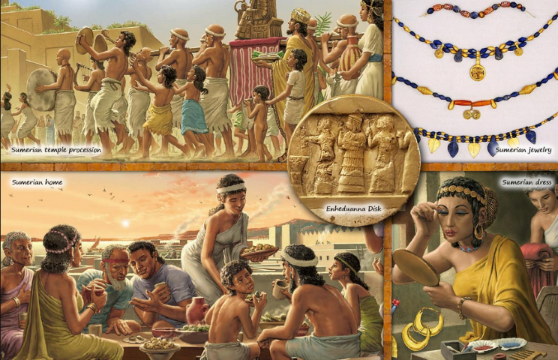
Artist’s conception of daily life, showing clothing, ornamentation, and social gatherings.
The image below suggests how Anu’s homecoming might have appeared (Eden’s Bride, Chapter 23). Note the beer “keg” and straw, center, fresh keg being brought in on a pole, background.
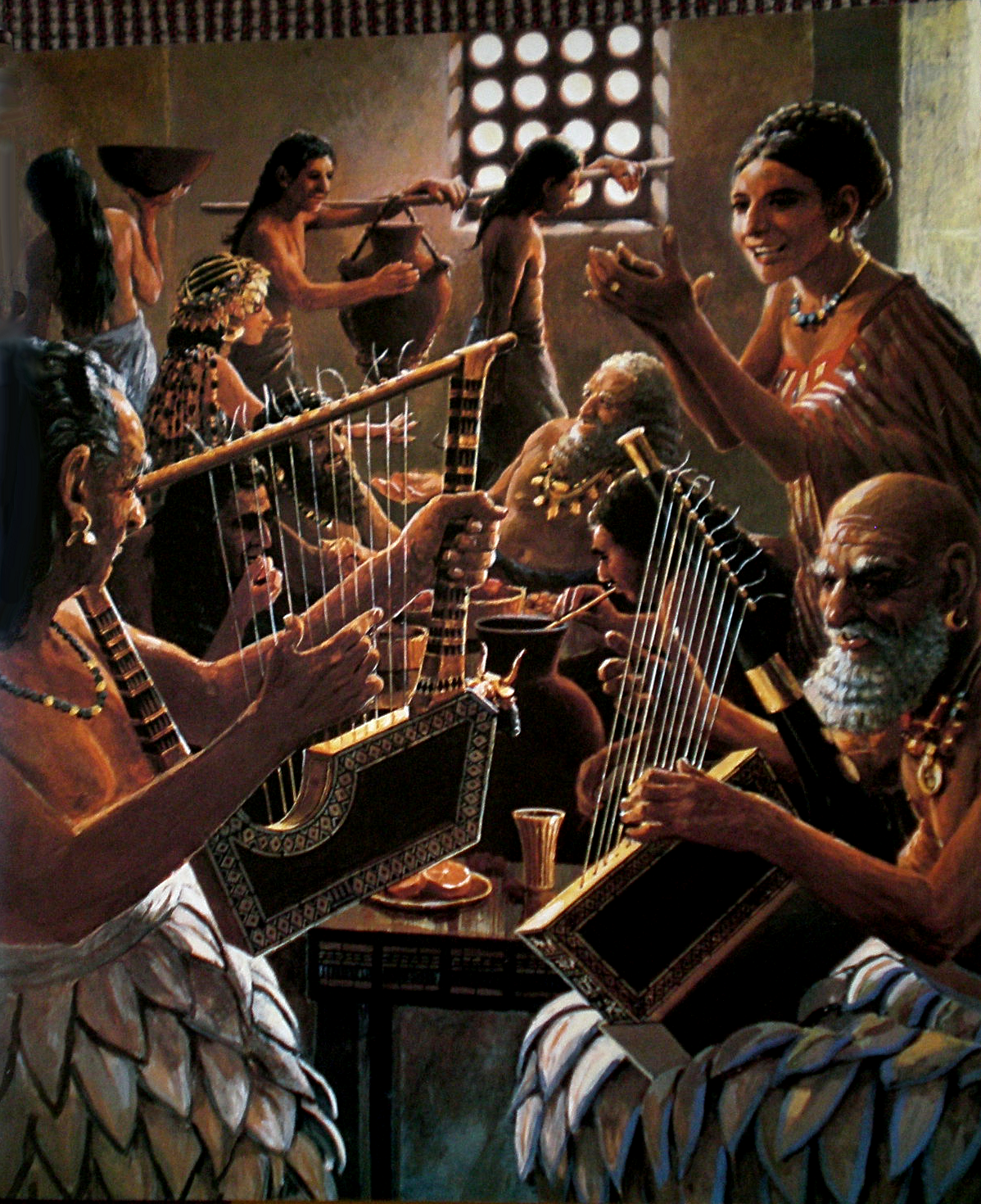
Artist’s conception of a Sumerian family celebrating in a home setting.
EARLIEST WRITING
Cuneiform evolved from some of the symbols shown left into the sharper, briefer forms to the right. According to this table, it took centuries for Sumerians to arrive at a uniform standard, then more than 2,000 years to come to the form we commonly associate with it today. The actual transitions depended on regional, cultural, and political influences which were always in a state of flux.
Sample of early writing evolution, from primitive drawn pictograph to abstract impression with reed stylus.
TEMPLE VIEW OF NIPPUR
Artist’s conception of Nippur stretched out below Temple Ekur, showing mid-city canal in foreground, Euphrates in the distance. This is how it might have appeared to Uruna during Morning Call. For the full movie by the awesome Iraqi artist/engineer Kais Jacob Ishak, click the image.
SWIFTHULL, OR TARADA
A latter day Ma’dan tarada (1930s) virtually unchanged from thousands of years ago, from a photograph by Wilfred Thesiger, The Marsh Arabs. Formed from reeds and sealed with bitumin, it was the sole means of marsh transportation if you didn’t want to swim with the crocs. I imagined a craft like this as the speediest mode of transportation in Uruna’s day, so I called it a “swifthull.”

THE HARSHNESS OF THE GHANA
A depiction from Eden’s Bride at day’s end, when the injured hunter crawls up from the lion’s lair, exhausted and hoping to die before nightfall (Eden’s Bride, Chapter 9).
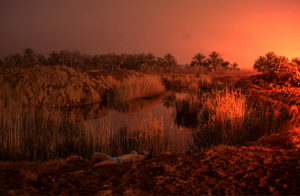
MARSH VILLAGE
Dwellers in the marsh gathered in clusters of reed isles and built huts, animal shelters, and large lodges called mudhifs. Here is how Kudu Mahti might have appeared (Eden’s Bride, Chapter 4).
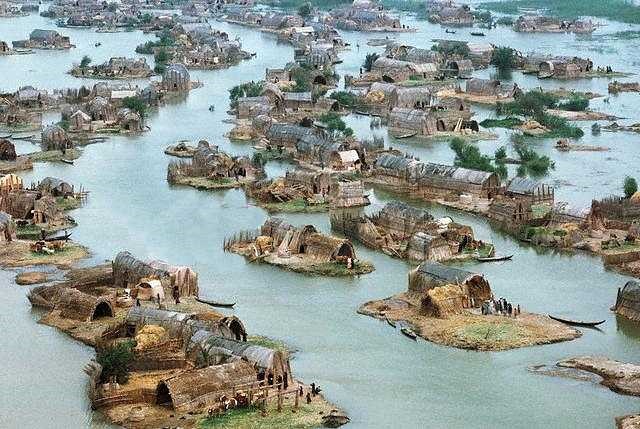
TALISMAN
A claw from the lion threatening Kudu Mahti becomes a love talisman and symbol of power throughout the Sumerian Chronicles.
MISSION TO REFUGEES
A depiction of adolescent Uruna at work with a planter creating a new village for refugees from the rust plague (Eden’s Promise, Ch. 31-32). The background reed structure is the communal lodge, referred to as a mudhif, still to be found in Iraq today (see Marsh Village above).
